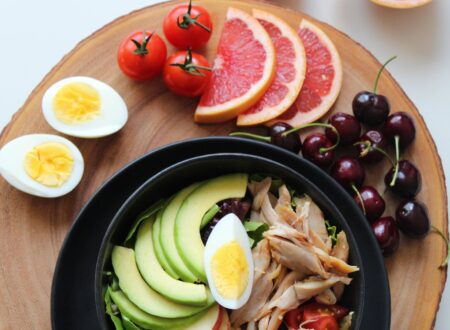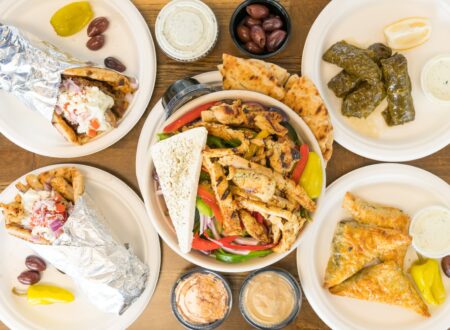In our fast-paced world, finding time to cook healthy, budget-friendly meals every day can feel overwhelming. That’s where meal prepping comes in — a game-changing habit that helps you eat better, save money, and reduce daily stress. Whether you’re a busy parent, a college student, or just someone looking to simplify your life, learning the art of meal prepping can completely transform your weekly routine.
Let’s break it down with some practical tips and insights on how to make meal prepping work for you.
1. What Is Meal Prepping and Why Should You Care?
Meal prepping is the process of planning and preparing your meals in advance — often in bulk — to eat throughout the week. It can involve cooking full meals, prepping ingredients (like chopping veggies or marinating proteins), or simply portioning out snacks.
But it’s more than just saving a few hours in the kitchen. The benefits are huge:
- Saves Time: You spend less time each day figuring out what to eat or cooking from scratch.
- Saves Money: Buying in bulk, using ingredients efficiently, and avoiding last-minute takeout keeps your grocery bill in check.
- Reduces Stress: No more dinner panic at 6 p.m. — your food is ready when you are.
- Supports Health Goals: Prepped meals make it easier to eat nutritious food and resist impulsive choices.
In short, meal prepping gives you back control over your time, your wallet, and your plate.
2. The Meal Prep Starter Kit: What You’ll Need
Getting started with meal prepping doesn’t require fancy tools or a giant kitchen. A few essentials can make a big difference:
- Reusable containers – Get a mix of sizes for entrees, sides, and snacks. Glass containers are great for reheating.
- Sharp knives and a cutting board – You’ll do a lot of chopping. Invest in quality tools to save time and frustration.
- Sheet pans and baking trays – Ideal for roasting veggies or baking large batches.
- A slow cooker or instant pot (optional) – These appliances are meal prep superstars for hands-off cooking.
- Labels or masking tape – Label containers with the meal name and date to stay organized.
Also, make sure your fridge and freezer are cleaned out and ready to handle your prepped food. A little organization goes a long way!
3. Plan Like a Pro: How to Create a Meal Prep Menu
The key to successful meal prepping is planning. Take 15–20 minutes each week to:
Step 1: Choose Your Meals
Pick 3–5 meals to prep for the week. Go for recipes that store well and reheat nicely — think grain bowls, pasta bakes, soups, stir-fries, and roasted veggie dishes.
Step 2: Make a Shopping List
Write down all ingredients, grouped by category (produce, protein, pantry, dairy, etc.). This keeps your grocery run fast and efficient.
Step 3: Shop Once
Do one big grocery trip to get everything you need. Stick to your list to avoid impulse buys.
Step 4: Pick a Prep Day
Most people choose Sunday or Monday as their meal prep day. Block out 1–2 hours to cook, portion, and store your meals for the week ahead.
Remember: start small. You don’t have to prep every single meal — even just prepping lunches or dinners can make a big difference.
4. Smart Storage Tips to Keep Food Fresh and Safe
Prepping food is only half the battle — storing it properly ensures it stays fresh and tasty.
- Refrigerate meals you’ll eat within 3–4 days. Use airtight containers and label with the prep date.
- Freeze meals for later in the week. Casseroles, soups, and pasta dishes freeze particularly well. Just defrost overnight in the fridge or reheat directly.
- Store sauces and dressings separately. This prevents soggy food and keeps textures crisp.
- Cool food before refrigerating. Placing hot food directly in the fridge can raise the internal temperature and lead to spoilage.
Bonus tip: Keep a “meal map” on your fridge so you know what to eat each day and avoid forgetting about that chili tucked in the back.
5. Meal Prep Hacks to Make It Easy and Sustainable
Meal prepping doesn’t have to mean cooking the same boring chicken and rice every week. Here are some tips to keep it fresh and sustainable:
- Batch cook versatile ingredients. Cook a big batch of grains, proteins, and veggies, then mix and match throughout the week for variety.
- Theme your meals. Try “Taco Tuesday,” “Pasta Night,” or “Meatless Monday” to make planning fun and easy.
- Use sauces, spices, and toppings. Switch up flavors with different marinades, spice blends, or sauces to keep meals exciting.
- Prep ingredients, not full meals. If you like cooking daily but want to save time, chop veggies, marinate proteins, and portion snacks ahead of time.
- Involve the family. If you live with others, make meal prep a group activity — it’s faster and can be fun with the right playlist!
Final Thoughts: A Simple Habit With Big Rewards
Meal prepping may take a little time upfront, but the rewards are well worth it. You’ll feel less stressed during the week, eat more balanced meals, and save serious cash. Like any habit, it gets easier the more you do it — and soon, it’ll become a part of your routine.
Whether you’re prepping for one or feeding a family, the key is to keep it realistic, flexible, and enjoyable. Don’t aim for perfection — just aim for progress.
So grab those containers, fire up the stove, and prep your way to a more organized, delicious week.





